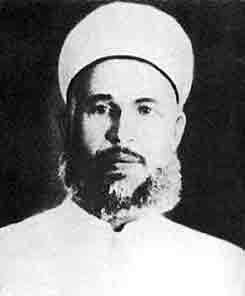
The Arab-Jew riots of 1929 in Jerusalem gradually quelled but only after consuming the lives of numerous Jews and after extensive damages to their properties and synagogues. Though everything seemed normal, it was superficial. The mutual anger in the minds of people on both the sides continued to rage unabated. The Arabs resorted to boycotting the Jew-owned businesses after the riots.
Of course, the violence did not deter the Jews from returning to Jerusalem. On the contrary, the number of the Jews returning to Jerusalem from every corner of the world continued to rise. The official census of Palestine conducted in 1931 recorded 751,952 Arabs, 90,607 Christians (this also included the Arab Christians) while the Jews numbered 175,006. The year 1931 saw 4,075 Jews return to Jerusalem, but this number increased to 61,584 by the year 1935.
In the entire sequence of events, the British tried to ‘run with the hare and hunt with the hounds’. In their efforts to please both the sides, the British in fact ended up making enemies with both, the Arabs and the Jews. On the one hand, the Jews were unhappy as the word given to them about the ‘Jewish national home’ by the British in the ‘Balfour Declaration’ was going nowhere. On the other hand, perturbed at the ever-increasing number of Jews in Palestine, and at the British doing nothing against it, the Arabs too had begun to consider the British as their foes.
Thus, the decade that began in 1920 saw a very different kind of equation shaping up in Palestine. The Arabs despised the Jews as well as the British while the Jews detested the Arabs and also the British. The well-known strategic saying, “The enemy of enemy is friend “did not at all apply here. The period saw several anti-Semitic and anti-British local, armed Arab groups mushroom across Palestine.
In the meantime, the ‘Great Depression’ engulfed the whole world. Production across the world had taken a hit and businesses were shutting their shop. Problems like unemployment, starvation were assuming ominous proportions. In many societies across Europe, the dislike for Jews was quite prevalent. The ills due to the global recession that pressured people only added to this hate. Following Germany, Hungary too saw the intensification of anti-Semitic movements.
Thus, left with no option but to immigrate to Palestine, the Jews from all parts of the world began returning to Jerusalem. However, after spending their entire lives in the various respective nations, the Jews were denied the right of even carrying with them whatever fortune they had earned through their toil. In Germany, the Jews leaving for Palestine were allowed to take along only 10 Deutsche Marks apart only from their clothing. This meant that when the Jews arrived in Palestine, they were left only with their diligent attitude, entrepreneurship and their skills and expertise in the respective fields.

….and using just these very qualities the immigrant Jews began developing the land of Palestine. Many new businesses kick-started. After the experiments to turn the barren land fertile, agriculture was undertaken at some places. The land of Palestine started to progress within a very short period of time. During the 1930s, when on the one hand the economies of not only Britain and France but also the United States were seeing a downturn due to the Great Depression, the economy of Palestine, on the other hand, was flourishing. The thriving businesses felt a need for the labourers which was fulfilled by the Arabs coming to Palestine from the neighbouring Arab nations. Upset at the growing number of the Jews, the local Arab leaders encouraged the Arabs from the neighbouring regions of Palestine to come and settle in the land. These immigrant Arabs worked as labourers with the Jewish businesses.

By now, the Arab leaders had turned extreme with their views about the immigration of the Jews to Palestine and formed Arab committees at various places to resist the Jews. Across Palestine, this led to the emergence of local Arab leaders who advocated and believed in armed resistance against not only the Jewish people but also the British administration. One of them, Izz ad-Din al-Qassam, was killed in a skirmish with the British forces in 1935. His death was the flashpoint of the ‘Arab Revolt of 1936’.

The Revolt took place mainly in two phases. The first phase was fought during the months of April to October 1936. The revolt which at the start, saw the participation of only the workers and local Arab committees gradually spread to also include the urban Arab elites and local Arab religious leaders. To effectively manage and smoothly coordinate the revolt, the ‘Arab Higher Committee’ was established. The Grand Mufti of Jerusalem– HajAmin al-Husseini was made the president of the committee. Even so, the spread of the revolt happened mainly in the urban areas and was fought with fairly peaceful means like general strikes and other political methods.
This was the first phase of the revolt. The British administration used the ‘carrot and the stick policy’ to break it within just six months. These included use of all means like extending political and other concessions, repression and pressure tactics using the influence of the neighbouring Arab nations. Then – Sultan of Iraq Ghazi bin Faisal, King of Saudi Arabia Abdul aziz Ibn Saud, King of Transjordan Abdullah bin Al-Hussein mediated to have the revolt withdrawn.
By October 1936, though the revolt (first phase) seemed to have subsided, discontent had started to brew among the locals against the levying of the additional taxes by the British to compensate for the losses resulting from the riots. As a result, the second phase of the revolt began in 1937. However, unlike the first, this phase was not just restricted to the urban centres but also spread to include the Arab peasants who opposed the British repression and severe taxation. This phase of the Arab revolt saw the British forces being targeted and it thus took a violent turn.

Extremely furious at this, the British outlawed all the Arab committees in Palestine including the ‘Arab Higher Committee’, and took to suppression and arrested, detained many local Arab leaders. Having got wind of his arrest, the Grand Mufti al-Husseini escaped in disguise from Palestine. He took shelter initially in French-controlled Lebanon and then went to Germany.

Though the British did not impose emergency, they passed various stringent laws and orders and continued high-handedness. As per the figures released by the British, more than 2,000 Arab rioters were killed in the direct conflicts, 108 were hanged while 169 died during terrorist acts. However, according to several other scholars, the numbers were far higher than those released by the British.
Albeit, the Arab Revolt that began in 1936 did not succeed, and in fact, had an indirect consequence on the process of the area being declared as the ‘State of Israel’.(To be continued…)












